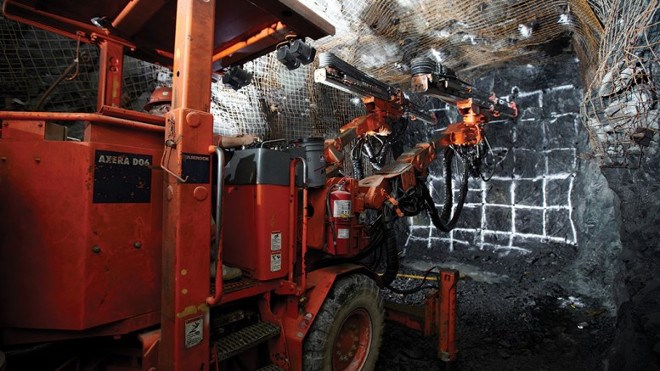The discovery of new underground reserves has pushed the life of the Lac des Iles Mine (LDI) to 10 years.
North American Palladium (NAP) released an updated feasibility study and mine plan that projects a longer mine life at its operation, north of Thunder Bay.
NAP has been employing a more efficient bulk mining method – known as sublevel shrinkage (SLS) – in the lower part of the mine that it intends to utilize at other near-surface resources on their property.
In June 2017, NAP put out a feasibility study that projected nine-and-a-half years of mine life. The updated study extends it by one year to 2027.
North American Palladium regards LDI as already one of the lowest cost underground mines in Canada. The new study shows improved margins, cash flows, mine life and net present value relative than what the company released in June 2017.
Daily production will increase from 6,000 tonnes to more than 12,000 tonnes.
The new mine plan introduces sub-level caving below and next to the dormant Roby open pit. It calls for the extraction of a large portion of high-grade resources residing just below the pit.
Over the next decade, NAP is looking at 40.9 million tonnes of underground and surface reserves at an average palladium grade of 2.31 grams per tonne, yielding 2.32 million ounces of payable palladium production.
Among the key financial metrics include an all-inclusive sustaining cost of US$622 and cash costs of US$504 per ounce of palladium sold, with an average underground mining cost of $33.67 per tonne.
The company said this underground mining method also gives them greater flexibility to withstand any volatility in the palladium market.
“With the completion of the operational turnaround last year, the company has now generated positive earnings for five consecutive quarters,” said company president-CEO Jim Gallagher, in a Sept. 17 news release.
“This new (mining) approach will take full advantage of LDI’s large, lower-grade near-surface resources and allow for the mining of more resources at an improved grade than contemplated in the prior 2017 feasibility study. The net result is improved operating margins, a longer mine life and greater value creation for shareholders.”
The company said the long-term view of the palladium market is for a metal deficit, driven by significant supply risks from declining South African production combined with a growing global demand.
That demand is coming from global auto sales growth, increasing global emissions standards, the ongoing move away from diesel engines to more palladium-intensive gasoline engines, and the increasing popularity of hybrid-electric vehicles, which require palladium loadings to meet emission standards.
“Improved current and long-term consensus for palladium prices also contributed to higher value when compared to the study released 16 months ago,” continued Gallagher.
“The market has begun to recognize that the primary deficit in the palladium market that has existed for the last few years is likely to continue well into the future. The new feasibility study places the company in a strong position to manage volatility in palladium prices and capitalize on the robust palladium market while continuing to add resources through mine site and greenfields exploration.”
The Lac Des lles mine is the company’s only operating asset. It’s located 85 kilometres north of Thunder Bay and has been operating since 1993.




